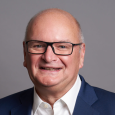Why is Namibia an enticing jurisdiction for mining and what attracted you to work in the region?
The company has been operating in Namibia since 2010, and we have come to appreciate the fact that it is one of the best mining jurisdictions in Africa. Besides the political and social stability, Namibia has an excellent infrastructure, and a well-established regulatory environment which is complemented by the transparent relationships we have had within all levels of government. Staffing is a worldwide problem, and it is particularly more challenging in the rare earth sector, where the majority of the processing knowledge has been kept in China for the last 20 years. However, we are very fortunate that Namibia has a generous talent pool to draw from, and it is a fantastic country for expats to live in, as well.

I have been in the junior resource sector most of my career and I enjoy the challenge and the diversity of the industry. Having seen the quality of the management board and the potential of the project developed by Namibia Critical Metals, I did not hesitate to join them.
Having worked in the industry for several years, do you sense we are at an inflection point regarding the perception the public has of the industry?
Fortunately, we did identify a certain mindset shift on the importance of mining to get to the green energy transition. The public seems to realize we need to make a substantial effort and investment in finding more resources, particularly in jurisdictions where there are environmentally responsible regulations.
To what extent could your Lofdal project change the global landscape for rare earth minerals production?
Lofdal is a significant heavy rare earths deposit, and it is rich in dysprosium and terbium, which are two of the critical metals used in permanent magnets for EV motors, wind turbines, and other electronics. If ten years ago it was only a 6-million-ton resource, through recent developments with our Japanese partners JOGMEC, we massively increased its size to 53 million tons. We did a 16,000-meter drill program back in 2020, and we established a resource of over 4700 tons of dysprosium and over 725 tons of terbium, elevating Lofdal to be one of the largest deposits of these truly rare metals outside of China.
When it comes to China's dominance of the rare earth market, do you think the West is starting to catch up or are we still far behind?
Although we are still lagging behind, the West seems to be waking up to the danger of our over reliance on China, as they currently still have a stranglehold both on mining and, particularly, on processing. Japan has been much further ahead of the curve in addressing this concern, and they have been more proactive over the last ten years, when they did a joint venture with Linus, thus securing their supply of light rare earths. They have now, through JOGMEC, made a similar joint venture with us to potentially be their long-term supplier of heavy rare earth metals. Unlike others, rare earth projects have very complex processing, and being able to economically extract the resources requires periods as long as ten years.
How are you perceiving the investment landscape in the mining industry, especially regarding processing, which sometimes seems to be left behind?
The Canadian and the U.S. governments alike are rolling out various programs meant to incentivize local development of both mines and processing plants, but just like it takes time to get a mine into production, it also seems to take time for government policies to actually translate into flowing funds. Processing plants in particular take a long time to be up and running, and they are very expensive. For instance, a rare earth separation facility can cost between $50 million to $250 million. We expect that by the time our project is ready to go into production, we will be able to do our processing somewhere in the Western part of the world. For this to become more than wishful thinking, earlier this year, together with two other small companies, we announced the formation of the Rare Earth Alliance Namibia. This initiative has the purpose to conduct a feasibility study to determine the economics of establishing a rare earth metal separation plant in Namibia.
In this context, what are the main objectives the company has for the next five years?
We are in the fortunate position where we have established a world-class joint venture partner to help develop our Lofdal project, and we are moving to rapidly accelerate it all the way through feasibility stages to get into commercial production by 2026. As an industry, we definitely need to bring onstream many more rare earth projects in order to even come close to meeting the targets of the green transition, and at Namibia Critical Metals we are extremely eager to assist with this goal every step of the way.






